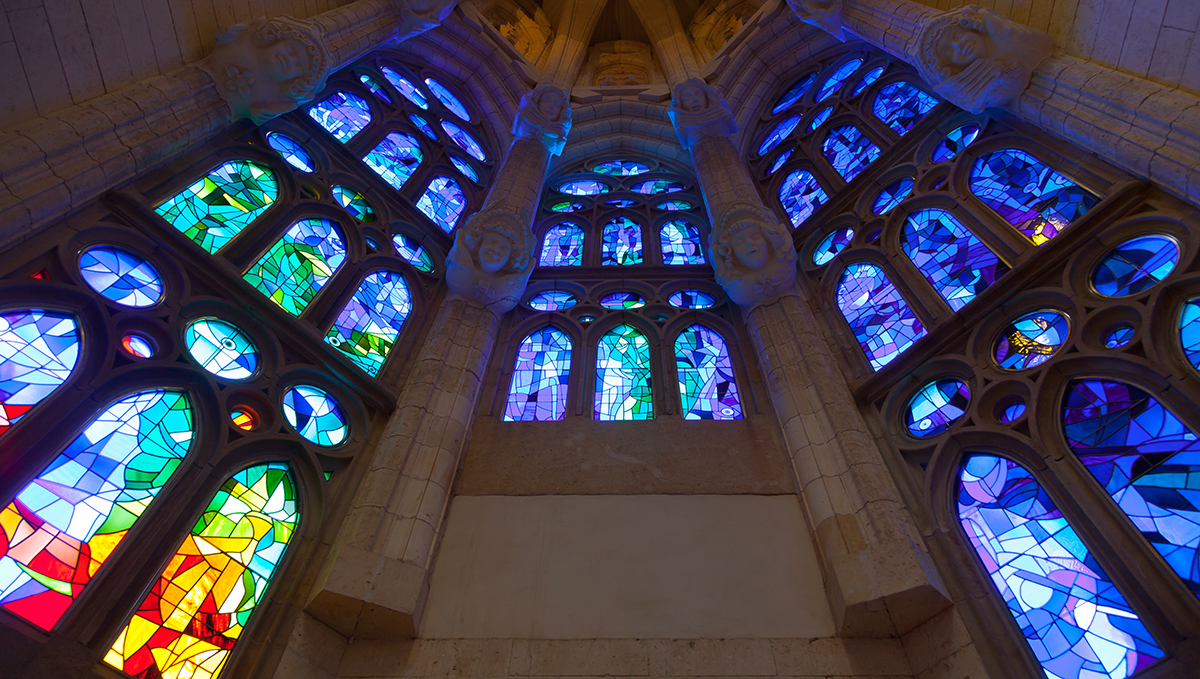Stained glass is a treasured object for religious organizations, as these windows may be historically and spiritually relevant. However, they are also costly to replace. While damage to stained glass installations may be covered under property policies, the glass must receive proper care and maintenance to ensure longevity. Review the following guidance for risks and mitigation tips on properly caring for stained glass.
Potential Risks
Dirt, grit, and other unwelcome mineral deposits can come from various sources on both the inside and outside of the window. The window’s natural deterioration over time can cause bowing and sagging and will eventually lead to the window’s collapse. Proper maintenance can extend the life of these windows another 100 years, even after the window has sustained damage. However, cleaning these windows comes with certain risks and is often best left to professionals. The following are common concerns with stained glass:
- Environmental factors—Rainwater can leave deposits of limestone, mortar, render and rust on the glass. These deposits attract and hold water to the window’s surface and may grow algae and lichens, damaging the window by keeping it damp. Organic growth also has acidic properties, which can corrode metal and paint. Bird droppings are also a common annoyance. In addition to being unappealing, there are several serious diseases caused by exposure to bird droppings. Removal of bird excrement should only be attempted by a trained professional.
- Internal surface—Decades of candle-burning inside the church can darken the inside of windows with soot accumulation.
- Deterioration—Stained glass windows consist of many pieces held together by lead caming. Over time, the lead and putty holding the windows together will decay, causing the structure to weaken. Poorly ventilated exterior coverings can cause the pieces to expand and contract, leading to sagging and bowing. If these issues aren’t addressed, the glass will crack or fall out of the caming until the window eventually collapses.
- Cleaning—The height and positioning of stained glass windows make cleaning risky. Cleaning chemicals may also cause more harm than good if they’re used without the direct supervision of a professional. Even the motion of the cleaning can cause damage. Therefore, it is often best to leave these tasks to a professional.
Mitigation
Prevention is often the best technique to ensure the window remains in good condition. Proper restoration techniques may also be needed with any of the aforementioned risks. Although regular cleaning is not required, the condition of the stained glass should be assessed by an accredited conservator to avoid unintentional damage. The following are risk mitigation measures:
- Cleaning—Proper cleaning can improve the clarity and splendor of stained glass windows. When done correctly, cleaning can also increase the lifespan of these windows.
- Preventive maintenance—Windows should be inspected every 20 years, and general maintenance should be performed regularly. This may include cleaning, removal, weatherproofing with putty or documentation of window condition.
- Restoration—When repairs are needed, glass typically has to be removed, disassembled and taken to a professional studio. In cases where deterioration is more severe, the glass may need to be releaded. Lead-work is another reason why restoration should be done by professionals, as it involves both safety and environmental concerns.
Unlike most building repairs, stained glass repair and restoration don’t have to be done all at once. Instead, a maintenance program can be stretched out over multiple years with smaller on-site repairs. However, postponing maintenance may allow the materials to deteriorate further, leading to more costly repairs overall.
Conclusion
Even with proper maintenance and care, costly damages can still occur. Stained glass repairs and maintenance should be budgeted for, and the risks should be understood. For more information on how to mitigate risk in your religious organization, contact Mindi McKinley Insurance Services today.


